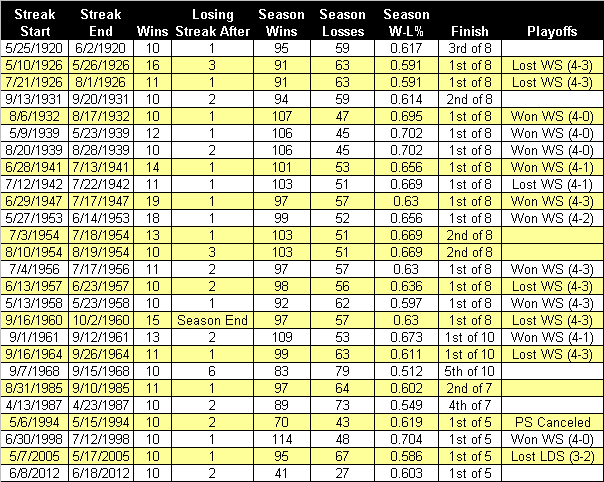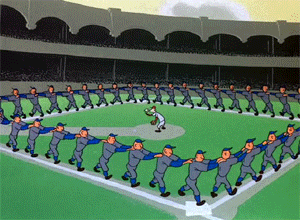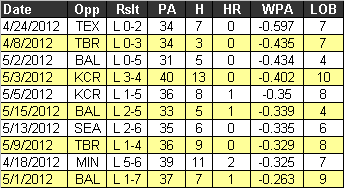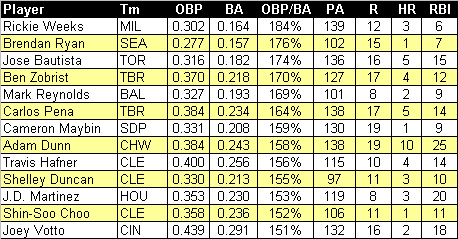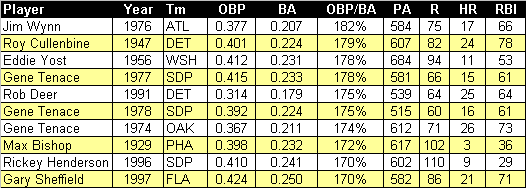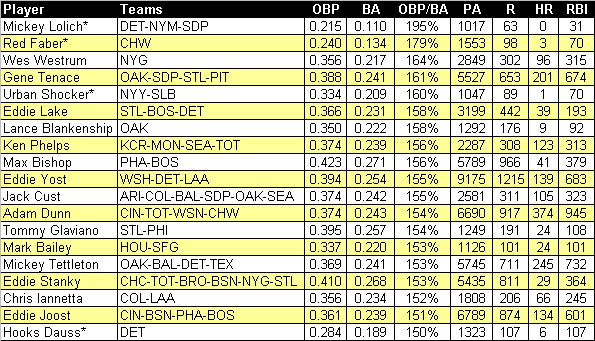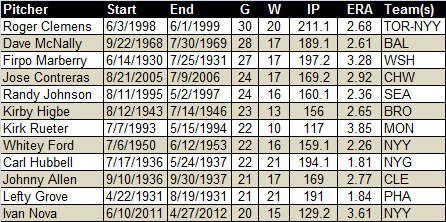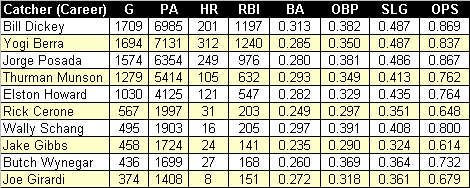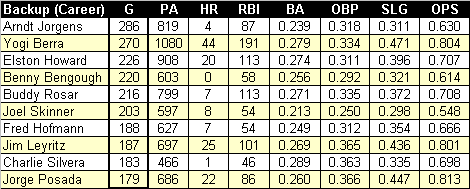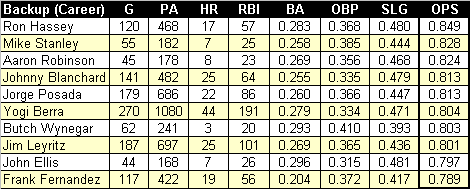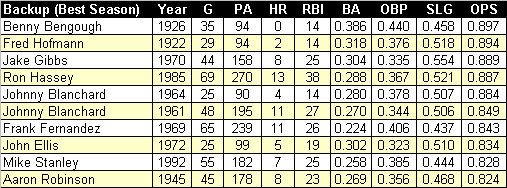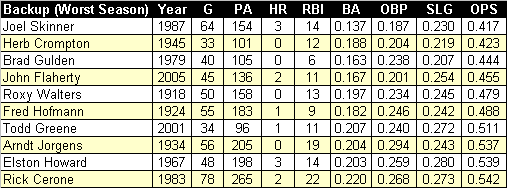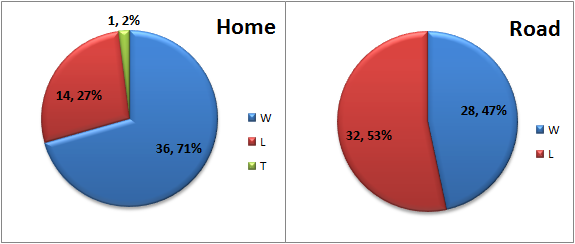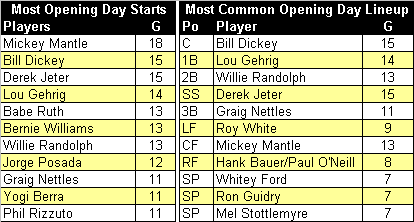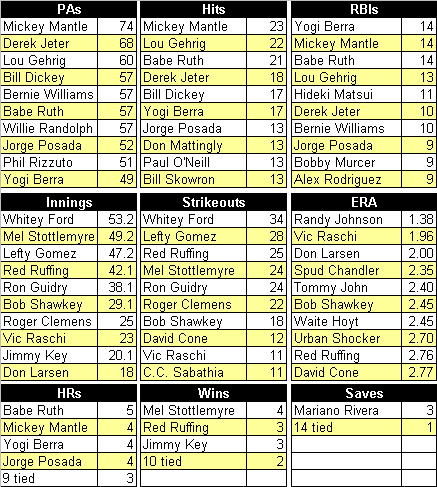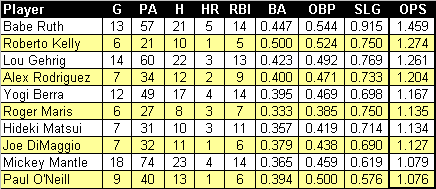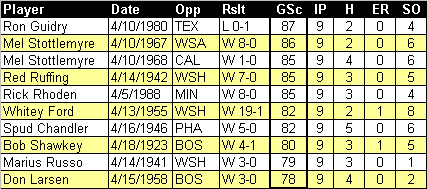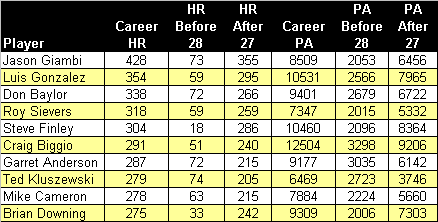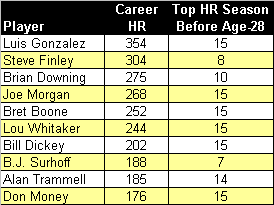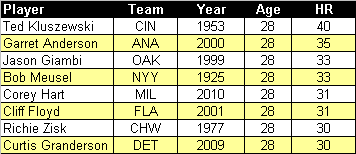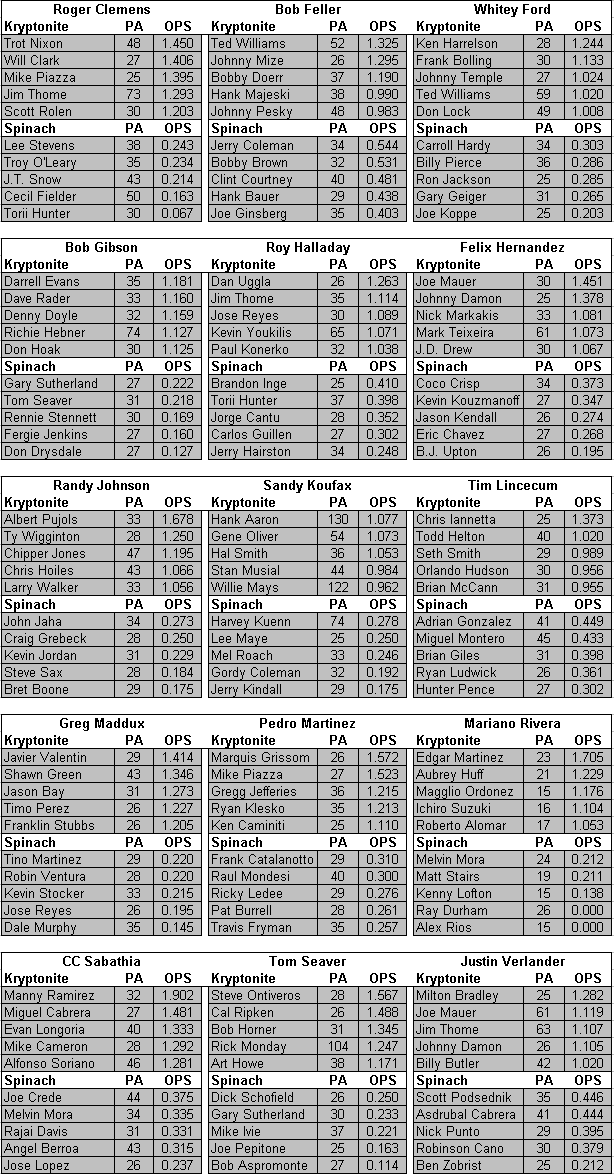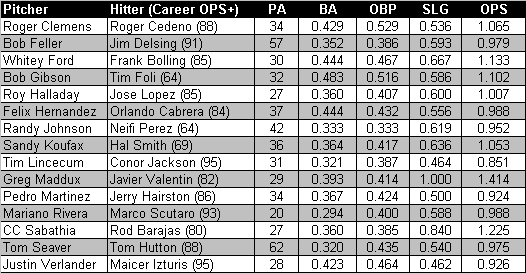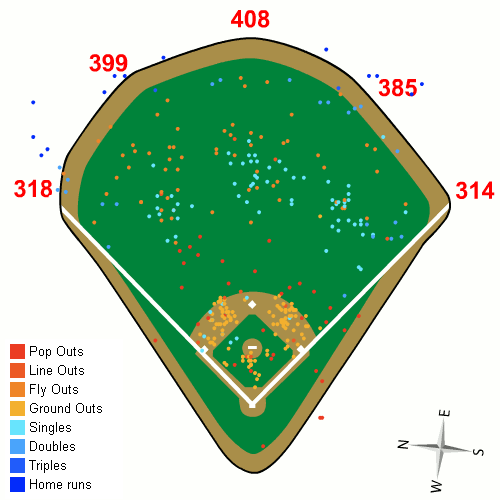If the opposition has the Yankees seeing red tonight, you really can’t blame them. When the White Sox take the field at Yankee Stadium, their lineup will include Kevin Youkilis, the latest rivalry castoff from the Red Sox whose .942 OPS against the Bronx Bombers is one highest in the long running feud between Boston and New York. However, Chicago didn’t acquire Youkilis before their series in the Bronx just so they could antagonize the Yankees. Rather, GM Kenny Williams jumped at the opportunity to fill one of the most cavernous holes on a major league roster. That he was able to do so with a three-time All Star was icing on the cake.
Best and Worst by Position, 2012

*DH excludes National League teams.
Note: Player in parenthesis has most plate appearances at the position.
Source: fangraphs.com
Other than catcher for the Oakland Athletics, no position has been more undermanned from an offensive standpoint than third base on the South Side. Before Youkilis was acquired, the combination of Brent Morel, Orlando Hudson, and Eduardo Escobar turned the position into the cold corner, so even with a hot start (5 for 12) by the former Red Sox’ star, it will take some time before the team’s woeful production from third base starts to thaw out.
Now that the White Sox have filled their deepest hole, the onus shifts to the Detroit Tigers, who have frittered away the benefits of having sluggers like Miguel Cabrera and Prince Fielder by giving away outs from two positions on the diamond. In order to keep up with the White Sox, who currently reside in first place in the A.L. Central, Detroit may also need to make a deal. As the trade deadline nears, the Cubs are expected to hold a fire sale, so, who knows, the answer to the Tigers’ troubles may also reside in Chicago?
For the most part, the primary player who has helped their team lead the league in offense at each position also happens to be in line for an All Star Game start (who says the fans don’t know how what they’re doing?), leaving only Jed Lowrie and Carlos Ruiz as mild surprises. It’s also interesting to note that no team has enjoyed top production from more than one position, which speaks further to the level of parity that currently exists in the game. In the past, a team like the Yankees would dominate the “best list”, but these days, the Bronx Bombers are more of a streamlined offense. Other than second base, the Yankees only rank in the top-five at shortstop, even though they have maintained above average production at every position but left field and catcher.
Yankees’ Relative Production at Each Position, 2012

*DH excludes National League teams.
Source: fangraphs.com
Thanks to the revised postseason structure, the period leading up to the trade deadline promises to be unique, if not active. With so many teams now contenders because of the added wild card, buyers could wind up outnumbering sellers, making the cost of a trade increasingly prohibitive. By striking early, however, the White Sox were able to take advantage of extenuating circumstances in Boston to address their greatest needed without paying too high of a price (or, according to some, any price at all). Because of how well Youkilis has performed against the Yankees, fans of the team may rue the White Sox good fortune over the next four days, but with 15 games left against the Red Sox, the Bronx Bombers could also wind up being one of the early winners of the trading season.







